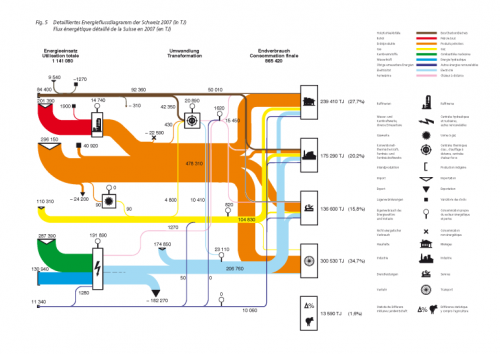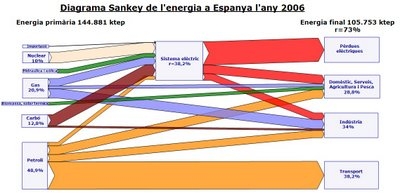The Virginia Center for Coal and Energy Research at Virgina Tech has a website on Virgina Energy Patterns and Trends (VETP).
This summary page on natural gas features a Sankey diagram for natural gas flows in Virginia in 2005.
Flows are in million cubic feet. Note that the division line between dry gas production (88.610 million cubic feet) and interstate imports (1.114.460 million cubic feet) overemphasizes VA’s own production. Also the magnitude of the “consumption” flow and “interstate exports” are not to scale, probably owed to the desire of the designer to be able to split up the consumption arrow into separate arrows. The transportation arrow is exaggerated, and would only be a thin line if to scale.
On the VETP summary page for coal, there is another interesting Sankey, also for 2005.
The second one also has some pecularities: The Sankey arrows for imports (15.764 thousand short tons) and exports (21.288 thousand short tons) of coal are not to scale, neither are the losses/unaccounted coal flows 4.951 thousand short tons.
Reminder to self: If I find the time I’ll do these two diagrams properly and to scale.









